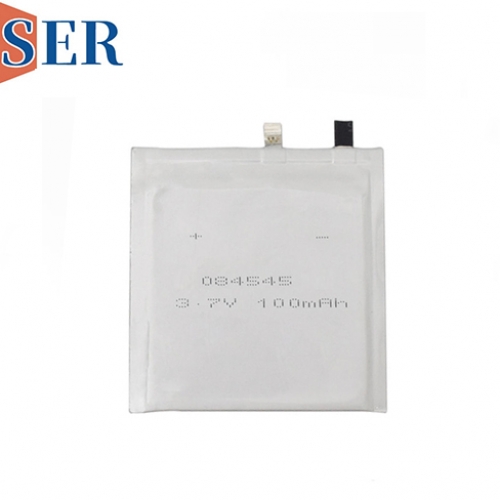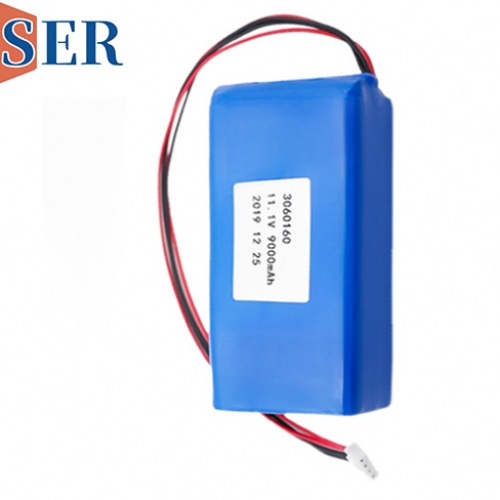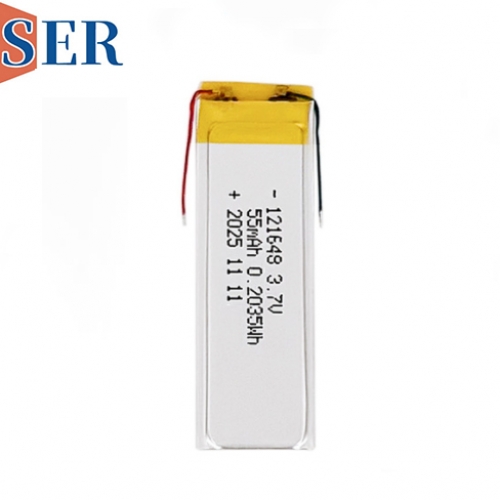Non-Rechargeable High-Temperature Battery Packs ER34615S and ER26500S for Applications in Oil Fields, Mines, and Exploration
Non-Rechargeable High-Temperature Battery Packs ER34615S and ER26500S for Applications in Oil Fields, Mines, and Exploration

Abstract
This paper delves into the characteristics, advantages, and applications of non-rechargeable high-temperature battery packs ER34615S and ER26500S, particularly focusing on their use in Measurement While Drilling (MWD) systems within oil fields, mines, and various exploration scenarios. These lithium-thionyl chloride (LiSOCl2) batteries are designed to operate under extreme temperature conditions, offering high energy density, long shelf life, and reliable performance, making them ideal for critical applications in harsh environments.
Keywords
Non-Rechargeable High-Temperature Battery; High-Temperature Battery;ER34615S; ER26500S; MWD; Oil Field; Mine;LiSOCL2 battery
1. Introduction
In the fields of oil and gas exploration, mining, and general geological exploration, Measurement While Drilling (MWD) systems play a crucial role. These systems require a stable and reliable power source to ensure accurate data transmission and real-time monitoring of drilling parameters. Non-rechargeable high-temperature battery packs, such as ER34615S and ER26500S, have emerged as the preferred choice due to their ability to withstand extreme temperatures and provide consistent power over extended periods.
2. Overview of ER34615S and ER26500S Batteries
2.1 Battery Chemistry and Design
ER34615S and ER26500S batteries are lithium-thionyl chloride (LiSOCl2) batteries. This chemistry offers several advantages, including high energy density, wide operating temperature range, and low self-discharge rate. The batteries are designed in a cylindrical shape, with specific dimensions for each model. ER34615S has a diameter of 34 mm and a height of 61.5 mm, while ER26500S has a diameter of 26 mm and a height of 50 mm.
The batteries are constructed with a stainless steel casing, which provides excellent mechanical strength and corrosion resistance. The positive electrode is made of a carbon monofluoride (CFx) or other suitable material, and the negative electrode is lithium metal. The electrolyte is a non-aqueous solution of lithium thionyl chloride, which acts as both the solvent and the reactant in the electrochemical reaction.
2.2 Electrical Characteristics
- Nominal Voltage: Both ER34615S and ER26500S batteries have a nominal voltage of 3.6 V. This high voltage allows for the use of fewer cells in series, reducing the overall size and weight of the battery pack.
- Capacity: The capacity of the batteries varies depending on the discharge rate and operating temperature. For example, the ER34615S battery can provide a capacity of up to 12000 mAh at a discharge rate of 100 mA at 150°C. The ER26500S battery has a similar capacity range, but the exact value depends on the specific design and manufacturing process.
- Operating Temperature Range: One of the key features of these batteries is their wide operating temperature range. The ER34615S battery can operate at temperatures ranging from -20°C to 150°C, while the ER26500S battery has a slightly narrower range of -40°C to 85°C. However, both batteries are capable of withstanding extreme temperatures, making them suitable for use in harsh environments such as oil fields, mines, and geological exploration sites.
3. Advantages of ER34615S and ER26500S Batteries in MWD Applications
3.1 High Energy Density
The high energy density of LiSOCl2 batteries allows for the design of compact and lightweight battery packs. This is particularly important in MWD systems, where space and weight are limited. The ER34615S and ER26500S batteries can store a large amount of energy in a small volume, enabling the MWD system to operate for extended periods without the need for frequent battery replacements.
3.2 Long Shelf Life
LiSOCl2 batteries have a very low self-discharge rate, typically less than 2% per year at room temperature. This means that the batteries can be stored for long periods without significant loss of capacity. In MWD applications, where batteries may be stored for months or even years before deployment, the long shelf life of ER34615S and ER26500S batteries ensures that they will be ready for use when needed.
3.3 Wide Operating Temperature Range
As mentioned earlier, the wide operating temperature range of these batteries is a major advantage in MWD applications. Oil fields, mines, and geological exploration sites often experience extreme temperature variations, from sub-zero temperatures in winter to high temperatures in summer. The ER34615S and ER26500S batteries can continue to operate reliably under these conditions, providing a stable power source for the MWD system.
3.4 High Reliability
LiSOCl2 batteries are known for their high reliability and long service life. The batteries are designed to withstand shock, vibration, and other harsh environmental conditions, making them suitable for use in demanding applications such as MWD. The use of high-quality materials and advanced manufacturing processes ensures that the batteries have a low failure rate and can provide consistent performance over their entire lifetime.
4. Applications in Oil Fields
4.1 Drilling Operations
In oil drilling operations, MWD systems are used to transmit real-time data about the drilling parameters, such as well depth, inclination, and azimuth, to the surface. This information is crucial for the drilling engineers to make informed decisions and adjust the drilling parameters as needed. The ER34615S and ER26500S batteries provide a reliable power source for the MWD system, ensuring that the data is transmitted accurately and in a timely manner.
4.2 Logging While Drilling (LWD)
LWD is an advanced drilling technique that combines the functions of MWD and well logging. It allows for the acquisition of geological and petrophysical data while drilling, providing a more comprehensive understanding of the subsurface formations. The ER34615S and ER26500S batteries are used to power the LWD tools, which typically require high power and operate in harsh environments.
4.3 Downhole Sensors and Instruments
In addition to MWD and LWD systems, ER34615S and ER26500S batteries are also used to power downhole sensors and instruments, such as pressure gauges, temperature sensors, and flow meters. These sensors and instruments provide valuable information about the well conditions, which is used to optimize the production and management of the oil field.
5. Applications in Mines
5.1 Mine Monitoring Systems
Mine monitoring systems are used to monitor various parameters within the mine, such as gas levels, air quality, and ground movement. The ER34615S and ER26500S batteries provide a reliable power source for the sensors and transmitters used in these systems, ensuring that the data is transmitted continuously and accurately. This information is crucial for the safety and efficiency of mine operations.
5.2 Underground Communication Systems
Underground communication systems are essential for the coordination and control of mining activities. The ER34615S and ER26500S batteries are used to power the communication devices, such as radios and data loggers, which enable the mine personnel to communicate with each other and with the surface control center.
5.3 Mining Equipment
Some mining equipment, such as drill rigs and ventilation fans, may also require a power source in remote or hard-to-reach areas. The ER34615S and ER26500S batteries can be used as backup power sources for these equipment, ensuring that they continue to operate in the event of a power outage.
6. Applications in Geological Exploration
6.1 Seismic Surveys
Seismic surveys are used to map the subsurface structures and identify potential oil and gas reservoirs. The ER34615S and ER26500S batteries are used to power the seismic sensors and recording equipment, which are deployed in remote and rugged terrains. The batteries' ability to withstand extreme temperatures and provide reliable power over extended periods is crucial for the success of seismic surveys.
6.2 Geophysical Logging
Geophysical logging involves the measurement of various physical properties of the rocks and fluids in the subsurface. The ER34615S and ER26500S batteries are used to power the logging tools, such as gamma-ray spectrometers and resistivity meters, which are lowered into the borehole to acquire the data.
6.3 Remote Sensing and Monitoring
In remote sensing and monitoring applications, ER34615S and ER26500S batteries are used to power sensors and transmitters that collect data on environmental parameters, such as temperature, humidity, and precipitation. This data is used for weather forecasting, climate change research, and natural resource management.
7. Case Studies
7.1 Oil Field Case Study
In an oil field in the Middle East, ER34615S batteries were used to power MWD systems in a deep drilling operation. The drilling depth exceeded 5000 meters, and the well temperature reached 150°C. The ER34615S batteries performed reliably throughout the drilling operation, providing a stable power source for the MWD system and ensuring the accurate transmission of drilling data. The batteries' high energy density and long shelf life allowed for extended drilling operations without the need for battery replacements, resulting in significant cost savings and increased drilling efficiency.
7.2 Mine Case Study
In a coal mine in China, ER26500S batteries were used to power gas monitoring sensors in an underground tunnel. The tunnel was prone to gas leaks, and the gas monitoring system needed to operate continuously to ensure the safety of the mine personnel. The ER26500S batteries provided a reliable power source for the sensors, even in the harsh and humid environment of the mine. The batteries' low self-discharge rate and wide operating temperature range ensured that the sensors remained operational for an extended period, providing early warning of gas leaks and preventing potential accidents.
8. Conclusion
Non-rechargeable high-temperature battery packs ER34615S and ER26500S are essential components of MWD systems used in oil fields, mines, and geological exploration. Their high energy density, long shelf life, wide operating temperature range, and high reliability make them ideal for use in harsh and demanding environments. The batteries' ability to provide a stable power source for critical applications ensures the safety, efficiency, and success of various operations in the oil and gas, mining, and exploration industries. As technology continues to advance, it is expected that these batteries will play an even more significant role in the future of these industries.





